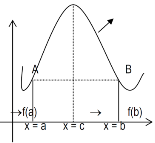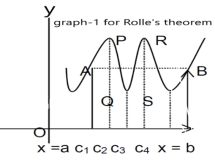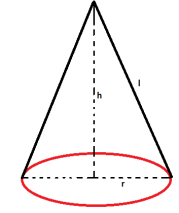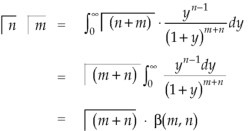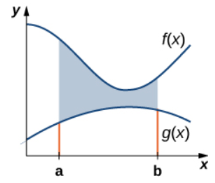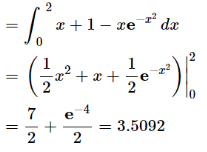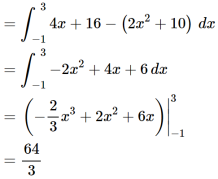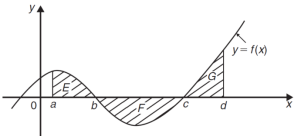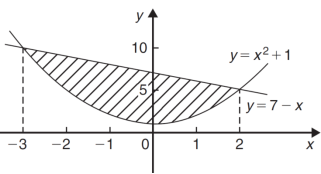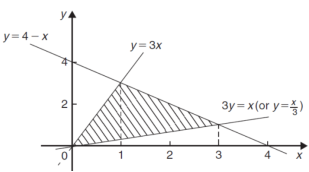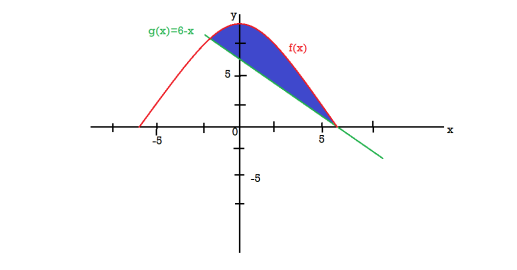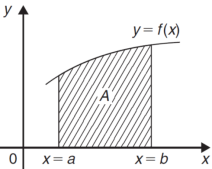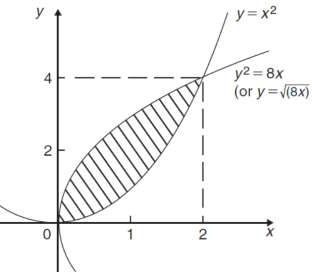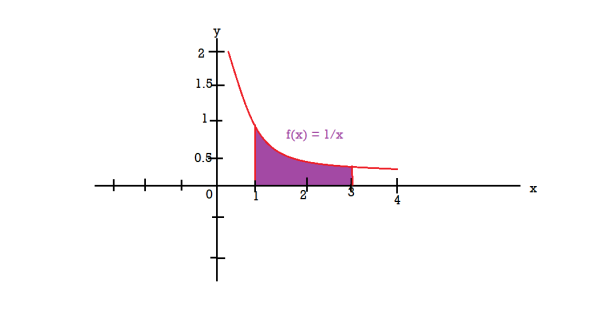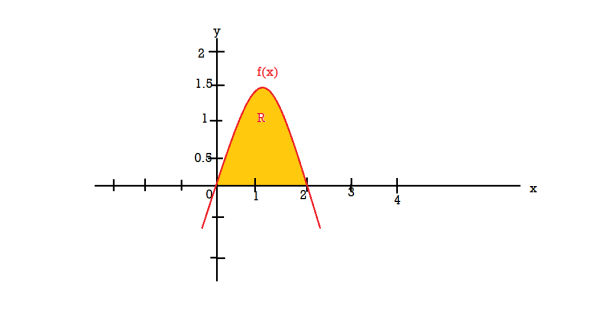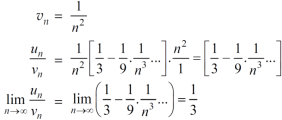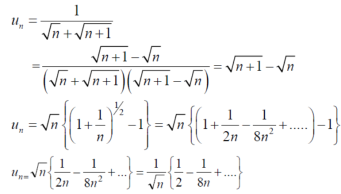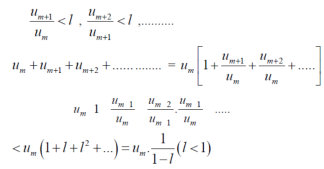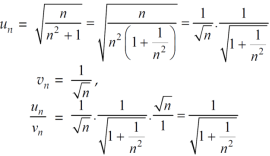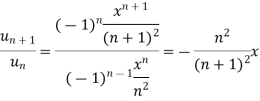UNIT-1
Calculus
Important definitions-
Continuity- suppose that a function f(x) is defined in the interval I , then it is said to be continuous at x=a , if

Differentiability- A function f(x) is said to be differentiable at x=a if
 exists where ‘a’ belongs to I
exists where ‘a’ belongs to I
Rolle’s theorem-
Suppose f(x) is a function defined on [a , b] and it satisfies the following conditions
1. f(x) is continuous in [a , b]
2. f(x) is differentiable in (a , b)
3. f(a) = f(b)
Then there exists atleast a point point c ϵ (a , b) , where a<b , such that f’(c) = 0
Proof: suppose y = f(x) is a function and A(a , f(a)) , B(b , f(b)) be two points on the curve f(x) and a,b are two end points. Now conditions for Rolle’s theorem-
1.f(x) is a continuous function in[a , b] , from the figure without breaks in between A&B on y = f(x).
2. f(x) is differentiable in (a , b), because joining A and B we get a line AB.
Slope of the line AB=0 then a point C at P also a tangent at P, or Q,R,S is parallel to x –axis.
|
Slope of the tangent at P or Q,R, S, will be 0,even the curve y = f(x) decreases or increases, that means f(x) is constant.
Derivative of f(x),
f’(c) = 0
That’s why, f’(c) = 0
3. the slope of the line AB is equal to zero, that means the line AB is parallel to x-axis.
So that, f(a) = f(b)
Example: Verify Rolle’s theorem for the function f(x) = x(x+3)  in interval [-3, 0].
in interval [-3, 0].
Sol. First we will differentiate the given function with respect to x, we get
f’(x) = (x²+3x)  + (2x + 3)
+ (2x + 3)
= 
This shows that f’(x) exists for all x, therefore f(x) is continuous for all x.
Now, f(-3) = 0 and f(0) = 0 , so that f(-3) = f(0).
Here f(x) satisfies all the conditions of Rolle’s theorem,
Then,
f’(x) = 0 , which gives
 = 0
= 0
We get,
X = 3 and x = -2
Here we can see that clearly -3<-2<0 , therefore there exists -2 ∈ (-3,0) such that
f’(-2) = 0
that means the Rolle’s theorem is true for the given function.
Example: Verify Rolle’s theorem for the given functions below-
1. f(x) = x³ - 6x²+11x-6 in the interval [1,3]
2. f(x) = x²-4x+8 in the interval [1,3]
Sol. (1)
As we know that every polynomial is continuous and differentiable for all points, so that the given function is continuous and differentiable in the interval [1,3]
Also, f(1) = f(3) = 0
Now we find f’(x) = 0
3x² - 12x +11 = 0
We get, x = 2+  and 2 -
and 2 - 
Hence both of them lie in (1,3).
Hence the theorem holds good for the given function in interval [1,3]
(2) As we know that every polynomial is continuous and differentiable for all points, so that the given function is continuous and differentiable in the interval [1,3]
Also, f(1) = 1 -4 +8 = 5 and f(3) = 9 – 12 + 8 = 5
Hence f(1) = f(3)
Now the first derivative of the function,
f’(x) = 0
2x – 4 = 0 , gives
X = 2
We can see that 1<2<3, hence there exists 2 between 1 and 3. And f’(2) = 0.
This means that the Rolle’s theorem holds good for the given function and given interval.
Example: Verify the Rolle’s theorem for sin x in the interval [ ]
]
Sol. Suppose f(x) = sin x
We know that sin x is continuous for all x.
Now , f’(x) = cos x exists for all x in ( ) and
) and
f( 0
0
f( 0
0
thus f(x) satisfies all the conditions of Rolle’s theorem.
Now,
f’(x) = 0 that gives , cos x = 0
x = 
here we notice that both intervals lie in ( .
.
there exists, c = 
so that, f’(c) = 0
the Rolle’s theorem has been verified.
Lagranges’s mean value theorem-
Suppose that f(x) be a function of x such that,
1. if it is continuous in [a , b]
2. if it is differentiable in (a , b)
Then there atleast exists a value cϵ (a , b)
f’(c) = 
Proof:
Lets define a function g(x),
g(x) = f(x) – Ax ………………..(1)
here A is a constant which is to be determined,
so that, g(a) = g(b)
|
now,
g(a) = f(a) – Aa g(b) = f(b) – Ab so, g(a) = g(b), f(a) – Aa = f(b) – Ab , which gives, A = |
As right hand side of eq.(1) is continuous in [a,b] , so that g(x) is continuous.
And right hand side of eq.(1) is differential in (a,b) , so that g(x) is differentiable in (a,b).
And g(a) = g(b) , because of the choice of A.
Hence g(x) satisfies all the conditions of Rolle’s theorem.
So that,
There exists a value c such that a<c<b at which g’(c) = 0
Now, differentiate eq. (1) with respect to x, we get
g’(x) = f’(x) – A here we know that, x = c, g’(c) = f’(c) – A as g’(c) = 0, then f’(c) – A =0 so that,, f’(c) = A, from equation (2) , we get f’(c) = hence proved. |
Example: Verify Lagrange’s mean value theorem for f(x) = (x-1)(x-2)(x-3) in [0,4].
Sol. As we see that the given function is a polynomial and we know that the polynomial is continuous in [0,4] and differentiable in (0,4).
f(x) = (x-1)(x-2)(x-3) f(x) = x-6x²+11x-6 now at x = 0, we get f(0) = -6 and at x = 4, we get. f(4) = 6 diff. the function w.r.t.x , we get f’(x) = 3x²-6x+11 suppose x = c, we get f’(c) = 3c²-6c+11 by Lagrange’s mean value theorem, f’(c) = now we get, 3c²-6c+11 = 3 3c²-6c+8 = 0 On solving the quadratic equation, we get C = 2 Here we see that the value of c lies between 0 and 4 Therefore the given function is verified. |
Example: Verify Lagrange’s mean value theorem for f(x) = log xin [1,e].
Sol. We already know that the function which is log x is continuous for all x>0.
So that this is the continuous function In [1,e] Now, f’(x) = 1/x which is exists for all x in (1,e) so that f(x) is differentiable in (1,e). by Lagrange’s mean value theorem, we get f’(c) = then , f’(c) = we get, c = e-1 e-1 will always lies between 1 and e . hence the function is verified by Lagrange’s mean value theorem. |
Cauchy’s mean value theorem-
Suppose we have two functions f(x) and g(x) of x, such that,
1. Both functions are continuous in [a,b]
2. Both functions are differentiable in (a,b)
3. g’(x) ≠ 0 for any x ϵ (a,b)
These three exists atleast , x = c ϵ (a,b) , at which
|
Proof: suppose ,we define a functions,
h(x) = f(x) – A.g(x) …………………….(1) so that h(a) = h(b) and A is a constant to be determined. Now, h(a) = f(a) – Ag(a) h(b) = f(b) – A.g(b) so that, f(a) – Ag(a) = f(b) – A.g(b) , which gives
A = |
Now , h(x) is continuous in [a,b] as RHS of eq. (1) is continuous in [a,b] and h(x) is diff. in (a,b) as RHS of eq. (1) is diff. in (a,b)
Also,
h(a) = h(b)
Therefore all the conditions of Rolle’s theorem are satistfied then there exists a Value x = cϵ (a,b)
so that h’(c) = 0
Differentiate eq.(1) w.r.t. x , we get h’(x) = f’(x) – A.g’(x) At x = c h’(c) = f’(c) – A.g’(c) 0 = f’(c) – A.g’(c) A = So that , we get
Hence the Cauchy’s mean value theorem is proved. |
Example: Verify Cauchy’s mean value theorem for the function f(x) = sin x and g(x) = cosx in [ 0 , π/2]
Sol. It is given tha, f(x) = sin x and g(x) = cos x Now, f’(x) = cos x and g’(x) = - sin x We know that both the functions are continuous in [ 0 , π/2] and differentiable in ( 0 , π/2 ) Also,g’(x) = -sin x ≠ 0 for all x ϵ( 0 , π/2 ) By Cauchy’s mean value theorem, we get
That means
Cot c = 1 C = Now we see that
|
Example: Verify Cauchy’s mean value theorem for the function f(x) = x⁴ and g(x) = x² in the interval [1,2]
Sol. We are given, f(x) = x⁴ and g(x) = x
Derivative of these fucntions ,
f’(x) = 4x³ and g’(x) = 2x
put these values in Cauchy’s formula, we get


2c² = 
c² = 
c = 
now put the values of a = 1 and b = 2 ,we get
c =  =
= =
=  (approx)
(approx)
Hence the Cauchy’s theorem is verified.
Key takeaways-
Rolle’s theorem-
1. f(x) is continuous in [a , b]
2. f(x) is differentiable in (a , b)
3. f(a) = f(b)
2. Lagranges’s mean value theorem-
1. if it is continuous in [a , b]
2. if it is differentiable in (a , b)
Then there atleast exists a value cϵ (a , b)
f’(c) = 
3. Cauchy’s mean value theorem-
1. Both functions are continuous in [a,b]
2. Both functions are differentiable in (a,b)
3. g’(x) ≠ 0 for any x ϵ (a,b)
These three exists atleast , x = c ϵ (a,b) , at which
|
Taylor’s Theorem- If f(x + h) is a function of h which can be expanded in the ascending powers of h and is differentiable by any number of times with respect to h, then-
Which is called Taylor’s theorem. If we put x = a, we get-
Maclaurin’s Theorem- If we put a = 0 and h = x then equation(1) becomes-
Which is called Maclaurin’s theorem. Note – if we put h = x - a then there will be the expansion of F(x) in powers of (x – a) We get-
|
Example: Express the polynomial  in powers of (x-2).
in powers of (x-2).
Sol. Here we have,
f(x) = 
differentiating the function w.r.t.x-
f’(x) = 
f’’(x) = 12x + 14
f’’’(x) = 12
f’’’’(x)=0
now using Taylor’s theorem-
|
Here we have, a = 2,
Put x = 2 in the derivatives of f(x), we get-
f(2) = 
f’(2) = 
f’’(2) = 12(2)+14 = 38
f’’’(2) = 12 and f’’’’(2) = 0
now put a = 2 and substitute the above values in equation(1), we get-
|
Example: Expand sin x in powers of 
Sol. Let f(x) = sin x Then, =
By using Taylor’s theorem-
Here f(x) = sin x and a = π/2
f’(x) = cosx , f’’(x) = - sin x , f’’’(x) = - cos x and so on.
Putting x = π/2 , we get f(x) = sin x = f’(x) = cos x = f’’(x) = -sin x = f’’’(x) = -cos x = from equation (1) put a =
= |
Example: Expand  in powers of (x – 1).
in powers of (x – 1).
Sol. Here we have-
Now-
Put these values in Taylor’s theorem-
We get-
|
Example: By using Maclaurin’s series expand tan x.
Sol. Let-
Put these values in Maclaurin’s series we get-
|
Example: Expand  by using Maclaurin’s series.
by using Maclaurin’s series.
Sol. Let
Put these values in Maclaurin’s series-
Or
|
Key takeaways-
2. Maclaurin’s Theorem-
|
Let we have two functions f(x) and g(x) and-
Then-
|
Is an expression of the form 
In that case we can say that f(x)/g(x) is an indeterminate for of the type  at x = a.
at x = a.
Now, Let we have two functions f(x) and g(x) and-
Then-
Is an expression of the form Some other indeterminate forms are |
L’Hospital’s rule for  form-
form-
Working steps-
1. Check that the limits f(x)/g(x) is an indeterminate form of type  .
.
(Note- we can not apply L’Hospital rule if it is not in indeterminate form)
2. Differentiate f and g separately.
3. Find the limits of the derivatives .if the limit is finite , then it is equal to the limit of f(x)/g(x).
then it is equal to the limit of f(x)/g(x).
Example-1: Evaluate 
Sol. Here we notice that it is an indeterminate form of  .
.
So that , we can apply L’Hospital rule-
|
Example-2: Evaluate  .
.
Sol. Let f(x) = Here we see that this is the indeterminate form of 0/0 at x = 0. Now by using L’Hospital rule, we get-
= = = |
Example: Find the value of a, b if
|
Solution:
Let
But
Note- Suppose we get an indeterminate form even after finding first derivative, then in that case , we use the other form of L’Hospital’s rule. If we have f(x) and g(x) are two functions such that
If
|
Example-3: Evaluate Sol. Let f(x) =
And
But if we use L’Hospital rule again, then we get-
|
Example-4: Evaluate Sol. We can see that this is an indeterminate form of type 0/0. Apply L’Hospital’s rule, we get
But this is again an indeterminate form, so that we will again apply L’Hospital’s rule- We get
|
L’Hospital’s rule for  form-
form-
Let f and g are two differentiable functions on an open interval containing x = a, except possibly at x = a and that
If
|
Theorem- If we have f(x) and g(x) are two functions such that If
|
Example-5: Find Sol. Let f(x) = log x and g(x) = These two functions satisfied the theorem that we have discussed above- So that,
|
Example-6: Evaluate Sol. Apply L’Hospital rule as we can see that this is the form of
Note- In some cases like above example, we can not apply L’Hospital’s rule. |
Other types of indeterminate forms-
Example-7: Evaluate Sol. Here we find that-
So that this limit is the form of 0 Now, Change
Now this is the form of 0/0, Apply L’Hospital’s rule-
|
Example: Evaluate Solution: Let
Taking log on both sides we get,
i.e.
|
Example: Evaluate Solution: Let
i.e.
|
Example: Evaluate Solution: Let
|
Key takeaways-
- L’Hospital’s rule for
 form-
form-
Working steps-
1. Check that the limits f(x)/g(x) is an indeterminate form of type  .
.
(Note- we can not apply L’Hospital rule if it is not in indeterminate form)
2. Differentiate f and g separately.
3. Find the limits of the derivatives .if the limit is finite , then it is equal to the limit of f(x)/g(x).
then it is equal to the limit of f(x)/g(x).
Note- If we have f(x) and g(x) are two functions such that
If
|
2.If we have f(x) and g(x) are two functions such that If
|
A function f(x) is said to have a minimum value at x = a if there exists a small number ‘h’, such that f(a) < f(a – h) & f(a + h).
And
A function f(x) is said to have a maximum value at x = a if there exists a small number ‘h’, such that f(a) > f(a – h) & f(a + h).
Note- when we take maximum and minimum value together then it is called extreme value.
The points at which the function gets the extreme value are known as turning points.
Step by step procedure to find maxima and minima-
Step-1: find the first derivative of the function f’(x) and put it equals to zero. Now solve the equation and let its roots be a, b, c, etc.
Step-2: find the second derivative f’’(x) and substitute in it by turns x = a, b, c....
If f’’(a) is negative then f(x) is maximum at x = a.
If f’’(a) is positive then f(x) is minimum at x = a.
Example: Show that sin x (1 + cos x) is a maximum when  .
.
Sol.
Let
Then first derivative-
So that-
Now-
So that- So that-
Therefore f(x) has a maximum at |
Example: Show that the diameter of the right circular cylinder of greatest curved surface which can be inscribed in a given cone is equal to the radius of the cone.
Sol. Suppose r is the radius OA of the base and Now inscribe a cylinder in it with base radius OL = x Then the height of the cylinder LP = LA cot The CSA of cylinder-
Now
Therefore S is maximum when x = r/2. |
Key takeaways-
- A function f(x) is said to have a minimum value at x = a if there exists a small number ‘h’, such that f(a) < f(a – h) & f(a + h).
- A function f(x) is said to have a maximum value at x = a if there exists a small number ‘h’, such that f(a) > f(a – h) & f(a + h).
When we apply limits in indefinite integrals are called definite integrals.
If an expression is written as  , here ‘b’ is called upper limit and ‘a’ is called lower limit.
, here ‘b’ is called upper limit and ‘a’ is called lower limit.
If f is an increasing or decreasing function on interval [a , b], then
Where |
Properties-
1. The definite integral applies only if a<b, but it would be appropriate to include the case a = b and a>b as well, in that case- If a = b, then
And if a>b, then
2. Integral of a constant function-
3. Constant multiple property-
4. Interval union property- If a < c < b, then
5. Inequality- If c and d are constants such that c(b – a) Note- if a function f:[a , b]→R is continuous, then the function ‘f’ is always Integrable.
Example-1: Evaluate Sol. Here we notice that f:x→cos x is a decreasing function on [a , b], Therefore by the definition of the definite integrals-
Then
Now,
Here Thus
|
Example-2: Evaluate 
Sol. Here So that,
We know that-
And
Then equation (1) becomes-
Note- we can find the definite integral directly as-
|
Example-3: Evaluate- Sol.
|
Improper integrals (1) Let f is function defined on [a ,∞) and it is integrable on [a , t] for all t >a, then If
(2) Let f is function defined on (-∞,b] and it is integrable on [t , b] for all t >b, then If
(3) )Let f is function defined on (-∞, ∞] and it is integrable on [a , b] for every closed and bounded interval [a , b] which is the subset of R., then If
(4) Let f is function defined on (a, ∞) and If
(5) )Let f is function defined on (-∞ , b) and If
|
Improper integrals over finite intervals- (1) Let f is function defined on (a, b] and If
(2) Let f is function defined on [a, b) and If
(3) Let f is function defined on [a, c) and (c , b] . if then we define the improper integral of f over [a , b] as follows-
|
Key takeaways-
If a = b, then
And if a>b, then
3. Integral of a constant function-
4. Constant multiple property-
5. Interval union property- 6. If a < c < b, then
|
Ex.1: Evaluate Solution = γ(5/2) = γ(3/2+ 1) = 3/2 γ(3/2 ) = 3/2. ½ γ(½ ) = 3/2. ½ π = ¾ π Ex. 2: Find γ(-½) Solution: (-½) + 1= ½ γ(-1/2) = γ(-½ + 1) / (-½) = - 2 γ(1/2 ) = - 2 π
Ex. 3. Show that Solution:
= = = =
Ex. 4: Evaluate Solution: Let
Put
Ex. 5: Evaluate Solution: Let
Put
2. |
Evaluation of beta function 𝛃 (m, n)-
Here we have-
Or
Again integrate by parts, we get-
Repeating the process above, integrating by parts we get-
Or
|
Evaluation of gamma function-
Integrating by parts, we take
We get-
Replace n by n+1,
|
Relation between beta and gamma function- We know that-
Multiply equation (1) by
Integrate both sides with respect to x within limits x = 0 to x =
But
By putting λ = 1 + y and n = m + n We get by using this result in (2)-
So that-
|
Definition : Beta function
|
Properties of Beta function : |
2. |
3. |
4. |
Example(1): Evaluate I = Solution:
= 2 π/3
Example(2): Evaluate: I = 02 x2 / (2 – x ) . dx Solution: Letting x = 2y, we get I = (8/2) 01 y2 (1 – y ) -1/2dy = (8/2). B (3, 1/2 ) = 642 /15
|
BETA FUNCTION MORE PROBLEMS
Relation between Beta and Gamma functions :
| |||||||
|
Key takeaways-
There is wide range of definite integrals such as, from geometric applications to physical world problems.
we will study about these applications one by one-
(1) Area between the curves-
Suppose we want to find out the area between y = f(x) and y = g(x) on interval [a,b] such that f(x) ≥ g(x). see the figure
|
Let the area between the two curve is A, then A = Let’s do some examples, Example-1: find the area under the curves where f(x) = x+4 and g(x) = 3 – x/2 over the interval [1,4] Sol. Here limits are given a = 1 , b = 4, We know that, area under the curve, A = = = = = (16 – 7/4) = 57/4 So that the area of the region is 57/4 unit square.
Example-2: find the area under the curves where y = x Sol. When we draw the graph, curve does not meet, but depend on two vertical lines, Here boundary is [0 , 2] Area under the curve, A =
|
So that the area under the curve is 3.2092 unit square.
Example-2: Determine the area under the curves y = 2x² + 10 and y = 4x + 16. Sol. Here we will find out the intersection, which are the boundaries of the curve, 2x² + 10 = 4x + 16 2x² - 4x – 6 = 0 2 (x + 1) ( x – 3 ) = 0 We get, x = -1 and x = 3, We know that, Area under the curve, A =
(2) Average function value- We can use definite integrals to find out the average value of a function. The average value of a function over the interval [a , b] is given by the following expression , f( avg.) = |
Example-1: find the average value of the function f(x) = x³ over the interval[0,1]. Sol. We know that f( avg.) =
=
Example-2: find the average value of f(x) = cosx over the interval [0 , 𝛑/2] Sol. We know that, f( avg.) = Put the values , we get
(3) Work- This one is the easiest use of definite integral we know that work done, when a constant force F is applied to move the object over a distance d. W = Fd Now suppose that the force at any point x is F(x) , the the work done by to move the object from x = a to x = b is, W =
|
Example-1: Find the work done on a spring when we compress it from its natural length of 1m to the 0.75m , if the spring constant k = 16 N / m. Sol. The force is given by, F =16x Here we start to compress it at x = 0 and finish at x= 0.25 from its natural length. So we take lower limit and upper limit 0 and 0.25 respectively. We know that, W = = = 0.5 N.m
Example-2: A force of 1200 N compresses a spring from its natural length of 18 cm to a length of 16 cm. How much work is done in compressing it from 16 cm to 14 cm? Sol. Here, F = kx So that, 1200 = 2k K = 600 N/cm In that case, F = 600x We know that, W = W = W = 3600 N.cm |
Area under and between the curves- Total shaded area will be as follows of the given figure( by using definite integrals)- Total shaded area =
Example-1: Determine the area enclosed by the curves-
Sol. We know that the curves are equal at the points of interaction, thus equating the values of y of each curve-
Which gives-
By factorization,
Which means, x = 2 and x = -3 By determining the intersection points the range the values of x has been found-
And
We get the following figure by using above two tables-
Area of shaded region =
=
= ( 12 – 2 – 8/3 ) – (-18 – 9/2 + 9) = = 125/6 square unit |
Example-2: Determine the area bounded by three straight lines y = 4 – x, y = 3x and 3y = x
Sol. We get the following figure by using the equations of three straight lines- y = 4 – x, y = 3x and 3y = x
Area of shaded region-
|
Example-3: Find the area enclosed by the two functions-
Sol. We get the following figure by using these two equations
To find the intersection points of two functions f(x) and g(x)- f(x) = g(x)
On factorizing, we get-
x = 6, -2 Now
Then, area under the curve- A =
|
Therefore the area under the curve is 64/3 square unit. |
Areas and volumes of revolutions
The volume of revolution (V) is obtained by rotating area A through one revolution about the x-axis is given by-
Suppose the curve x = f(y) is rotated
|
Example-1: Find the area enclosed by the curves
Sol. We know that, at the point of intersection the coordinates of the curve are equal. So that first we will find the point of intersection-
We get, x = 0 and x = 2 The curve of the given equations will look like as follows-
Then, The area of the shaded region will be- A = So that the area will be 8/3 square unit. The volume will be = (volume produced by revolving =
Method of cylindrical shells- Let f(x) be a continuous and positive function. Define R as the region bounded above by the graph f(x), below by the x-axis, on the left by the line x = a and on the right x = b, then the volume of the solid of revolution formed by revolving R around the y-axis is given by
|
Example-2: Find the volume of the solid of revolution formed by revolving R around y-axis of the function f(x) = 1/x over the interval [1 , 3].
Sol. The graph of the function f(x) = 1/x will look like-
The volume of the solid of revolution generated by revolving R(violet region) about the y-axis over the interval [1 , 3] Then the volume of the solid will be-
|
Example-3: Find the volume of the solid of revolution formed by revolving R around y-axis of the function f(x) = 2x - x² over the interval [0 , 2].
Sol. The graph of the function f(x) = 2x - x² will be-
The volume of the solid is given by-
= |
Key takeaways-
A = 2. f( avg.) = 3. Work- W = |
Sequence – A function f : N The sequence is written as f(1) , f(2) , f(3) , f(4)……….f(n). Any sequence f(n) can be denoted as <f(n)> or {f(n)} or (f(n)). Suppose f(n) = Then it can be written as -
Example: suppose we have a sequence – 1 , 4 , 9 , 16 ,……….. and its n’th term is This sequence can be written as -< 1 |
Example:
Types of sequences – 1. Finite sequence- A sequence which has finite number of terms is called finite sequence. 2. Infinite sequence- A sequence which is not finite , called infinite sequence.
Limit of a Sequence- A sequence <
Example: If
Hence the limit of the sequence is 1/2 .
Some important limits to remember-
Convergent sequence- A sequence Sn is said to be convergent when it tends to a finite limit. That means the limit of a sequence Sn will be always finite in case of convergent sequence. Divergent sequence- when a sequence tends to ±∞ then it is called divergent sequence. Oscillatory sequence- when a sequence neither converges nor diverges then it is called oscillatory sequence.
Note- a sequence which neither converges nor diverges , is called oscillatory sequence. A sequence converges to zero Is called null.
Example-1: consider a sequence 2, 3/2, 4/3 , 5/4, …….. here Sn = 1 + 1/n Sol. As we can see that the sequence Sn is convergent and has limit 1. According to def.
Example-2: consider a sequence Sn= n² + (-1)ⁿ. Sol. Here we can see that, the sequence Sn is divergent as it has infinite limit.
|
Example: suppose
Series Infinite series- If It is denoted by Examples of infinite series-
Covergent series - suppose n→∞ , Sn→ a finite limit ‘s’ , then the seiresSn is said to be convergent . We can denote it as,
Divergent series- when Sn tends to infinity then the series is said to be divergent.
Oscillatory series- whenSn does not tends to a unique limit (finite or infinite) , then it is called Oscillatory series. Properties of infinite series – 1. the convergence and divergence of an infinite series is unchanged addition od deletion of a finite number of term from it. 2. if positive terms of convergent series change their sign , then the series will be convergent. 3. let 4. let
|
Example-1: check whether the series Sol. As we know that, Sn = Therefore, Sn = Now find out the limit of the sequence,
Here the value of the limit is infinity, so that the series is divergent as sequence diverges.
Example-2: check whether the series
Sol. The general formula for this series is given by, Sn = We get,
Hence the series is convergent and its values is 3/2.
Example-3: check whether the series Sol. The general formula can be written as,
We get on applying limits,
This is the convergent series and its value is 3 / 4 |
Example-4: check whether the following series is convergent or divergent. If convergent , find its value.
Sol. n’th term of the series will be,
|
Key takeaways-
3. 4. 5. 6. a sequence which neither converges nor diverges , is called oscillatory sequence. 7. A sequence converges to zero Is called null. 8. If It is denoted by |
The series 1. Convergent if the value of p is : p>1 2. Divergent if the value of p is: p≤1 Proof; Let p>1
Similarly,
And so on. Adding we get,
The right hand side of the above inequality is an infinite geometric series , the sum of the geometric series is finite hence the given series is convergent |
Example-1: Test the convergence of the following series:
Sol.
Here we take,
Which not zero and finite , So by comparison test ,
Is convergent. so that Example-2: Test the convergence of the given series:
Sol. Here,
Take,
|
Example-3: Test the convergence of the series:
Sol.
By p-series test,
Is convergent ( p = 3>1). Comparison test- Statement- Suppose we have two series of positive terms
Proof- We know that by the definition of limits, there exist a positive number epsilon(ε) Which is very small. Such that According to definition( comparison test) | k-ε< ignoring the first m terms of the series, we get k-ε< there will be two cases- case-1:
From (1),
Therefore Case-2: :
From eq. (1)
Then
From(2)
Hence,
Example: Test the convergence of the following series.
Sol. We have First we will find
And
Here, we can see that, the limit is finite and not zero, Therefore, Since So that , we can say that,
|
.
Example: Test the convergence of the following series-
Sol. Here we have the series,
Now,
Now comapare
We can see that the limit is finite and not zero. Here
So that,
Example: Show that the following series is convergent.
Sol.
Suppose,
Which is finite and not zero. By comparison test But,
Is convergent. So that |
Example: Test the series:
Sol. The series is,
Now,
Take,
Which is finite and not zero. Which is finite and not zero. By comparison test But,
Is divergent. ( p = ½) So that |
D-Alembert’s ratio test Statement- suppose 1. if k<1 , the series will be convergent. 2. if k>1 , then the series will be divergent. Proof: Proof: Case-1:
We know that from the definition of limits ,it follows,
But,
Is the finite quantity. So Case-2:
There could be some finite terms in starting which will never satisfy the condition,
In this case we can find a number ‘m’,
Ignoring the first ‘m’ terms, if we write the series as
We have , in this case
So that
|
Example-1: Test the convergence of the series whose n’th term is given below- n’th term = sol. We have byD’Alembert ratio test,
So that by D’Alembert ratio test , the series will be convergent.
Example-2: Test for the convergence of the n’th term of the series given below-
Sol. We have ,
Now , by D’Almbert ratio test At x = 1 , this test fails. Now , when x = 1
The limit is finite and not zero. Then by comparison test, Since Hence Therefore in the given series |
Power series A series of the form Where all the ‘a’ are independent of x, is known as power series in x Interval for convergence- In this power series-
D’Almbert’s ratio test-
If Or in other way if |x|<1/ Thus the interval of convergence of power series is-
Example-1: If the series Sol. Here Then,
By D’Almbert’s ratio test the series is convergent for |x|<1 and divergent if |x|>1. So at x = 1 The series becomes- At x = -1
This is an alternately convergent series. This is also convergent series, p = 2 Here, the interval of convergence is
Example-2: If the series Sol. Here
Then,
By D’Almbert’s ratio test the series is convergent for | Or At x = 0, the series becomes- At x = 2, the series becomes- It is an alternate series which is convergent by Leibnitz rule. So that the series |
Key takeaways- 1. The series 1. Convergent if the value of p is : p>1 2. Divergent if the value of p is: p≤1 2. Comparison test- Suppose we have two series of positive terms
3. D-Alembert’s ratio test Statement- suppose 1. if k<1 , the series will be convergent. 2. if k>1 , then the series will be divergent. |
Let’s first define the exponential functions-
A function which contains  where e is the constant, called an exponential function.
where e is the constant, called an exponential function.
Here ‘e’ is the exponent which has an approximate value 2.7183
The power series for The value of
If we obtain an actual value of The more terms we take in the series, the closer will be the value of |
Example: Find the value of 5 Sol. As we know that the exponential series is-
Here we get-
Now
Example: Expand Sol. We know that the power series for
Here we have to find- So that-
On solving, we get-
|
References
- E. Kreyszig, “Advanced Engineering Mathematics”, John Wiley & Sons, 2006.
- P. G. Hoel, S. C. Port And C. J. Stone, “Introduction To Probability Theory”, Universal Book Stall, 2003.
- S. Ross, “A First Course in Probability”, Pearson Education India, 2002.
- W. Feller, “An Introduction To Probability Theory and Its Applications”, Vol. 1, Wiley, 1968.
- N.P. Bali and M. Goyal, “A Text Book of Engineering Mathematics”, Laxmi Publications, 2010.
- B.S. Grewal, “Higher Engineering Mathematics”, Khanna Publishers, 2000.
- T. Veerarajan, “Engineering Mathematics”, Tata Mcgraw-Hill, New Delhi, 2010
- Higher engineering mathematics, HK Dass
